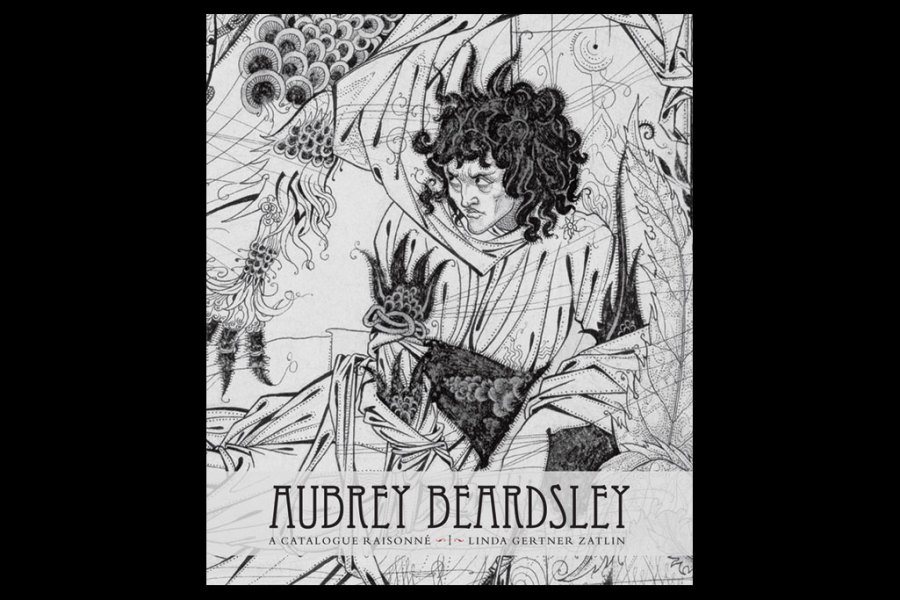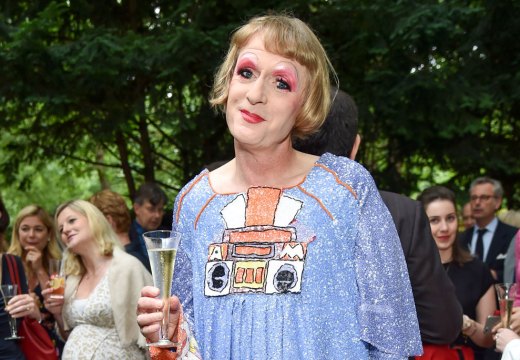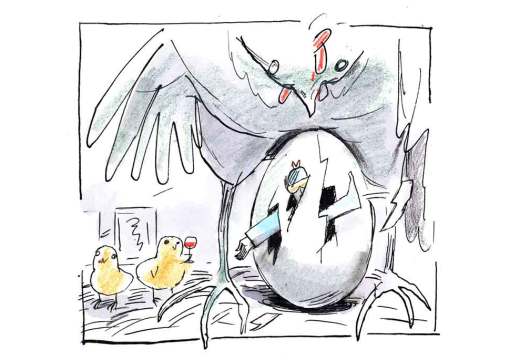Aubrey Beardsley was diagnosed with tuberculosis at the age of seven; he started drawing a year later, and didn’t stop till he died, in 1898, at the age of 25. Linda Gertner Zatlin’s magnificent new catalogue (Yale University Press) lists well over 1,000 drawings, none without interest, most of them masterworks, some the defining images of their time. Mortal illness lent Beardsley’s genius urgency, his mature career compressed into about five years. Poring with Zatlin over every sunflower and poppy, every nipple and tassel and cloven hoof, studying her digests of the large critical scrutiny these pictures have attracted over more than a century, one seems to pass in entranced slow motion over a huge corpus of work produced at superhuman speed. The experience is absorbing and exhilarating.
For all the speed there was nothing spontaneous in the execution of these drawings. The catalogue includes, early on, many schoolboy caricatures, and has an appendix of sketches found in Beardsley’s letters; though of biographical interest, few even hint at the hand which created the supremely calculated public works. Beardsley is the master of the unexpected but unalterably finished article. Only occasionally an earlier attempt is refined later on – he drew Salome with the head of John the Baptist the year before he was commissioned to illustrate the English translation of Wilde’s play, and his later image is stronger in every way. Wherever possible Zatlin reproduces Beardsley’s original drawings, but almost everything here was designed for publication, and as with many advanced artists you see him exploiting a new medium, in this case reproduction by line block – a zinc plate far cheaper and quicker than woodblock, but unable to represent half-tones. This limitation Beardsley embraced and explored to the full, in an art that depends as much on what it eliminates as on what it (often startlingly) includes. ‘Last summer,’ he bragged to an old school friend in 1893, ‘I struck for myself an entirely new method of drawing and composition, something suggestive of Japan, but not really japonesque. The subjects were quite mad and a little indecent. Strange hermaphroditic creatures wandering about in Pierrot costumes or modern dress; quite a new world of my own creation.’ It is a world instantly recognisable, and the influence of Japan would persist in Beardsley’s asymmetries and use of line, as well as in his eroticism and eye for the grotesque.

The Climax (1893), Aubrey Beardsley. Private Collection
By the time he wrote this letter, he was deeply immersed in a new edition of Malory’s Le Morte Darthur for the publisher Dent. He produced 353 drawings over a period of 18 months, a colossal job to entrust to a 20-year-old; its whole manner mimics the elaborately bordered and decorated style of Morris’s Kelmscott Chaucer, but in a much cheaper medium. In the figures one sees the presence of Burne-Jones, an early admirer and adviser of Beardsley, strangely subverted. The spiritual and emotional mystery of the Pre-Raphaelite face barely interested Beardsley, and in the Malory drawings his characteristic physiognomies, sulky, sensual, imperious and malign, already prevail. Zatlin reminds us that his faces were found ‘cheap’, ‘unhealthy’ and ‘ugly’; and of his calm response: ‘I find that most people are ugly. The sensual face is dominant, and it is this face that I have drawn from life.’
After Dent, Beardsley flourished under two publishers: first John Lane, for whom he produced the marvellous Salome drawings, and for whose Yellow Book he was the founding art editor in 1894. This was a magazine of both literature and art, represented in its own right, not as illustration. Beardsley set the look for it, contributed to the first four issues, then was hurriedly dumped in 1895 when his (purely professional) association with Wilde was thought to contaminate the whole magazine. His third publisher, with whom he worked exclusively for the last three years of his life, was Leonard Smithers. Smithers launched The Savoy in 1896 – no magazine can ever have had such riches as its first issue, for which Beardsley produced the cover, nine plates and a Christmas card inserted loose. But he was soon too severely ill to keep up such productivity, and since he was the magazine’s main attraction its sales swiftly dwindled and it folded within a year.

Cover for issue one of The Savoy (1895), Aubrey Beardsley. Harvard Art Museums/Fogg Museum, Cambridge, MA
Smithers’s edition of The Rape of the Lock is described on its title-page as ‘embroidered with nine drawings’ by Beardsley – an arch and unusual way of preparing the reader for the new density of patterning in the illustrations. It is hard not to feel a slackening of interest in these plates, for all their rococo fantasy of invention. With Salome Beardsley produced great images for a piece of literary kitsch, but in Pope’s poem he was dealing with a flawless masterpiece, and in a drawing such as that for the Cave of Spleen, Pope’s vivid surrealism (‘Men prove with child, as powerful fancy works, / And maids, turned bottles, cry aloud for corks’) is almost lost in the swirling congestion of Beardsley’s design.

Lysistrata Haranguing the Athenian Women (1896), Aubrey Beardsley. Victoria and Albert Museum, London
Yet the drawings that came soon after, for Aristophanes’ Lysistrata, were utterly different, his starkest in design and boldest in content. He combined the linear clarity of Greek vase painting with the colossal phalluses of Japanese erotic woodcuts. It is as if the fervid sexuality only just kept under wraps in his previous work had finally bared itself. Then, in the last year of his life, his illustrations for Théophile Gautier’s Mademoiselle de Maupin supplement pen and ink with grey and black washes – a surprising and poignant hint of new experiments that he might, had he lived to a good old age, have completed in the 1960s. This was just the time, with Brian Reade’s V&A exhibition of 1966, when the Beardsley revival was gaining power. Fifty years on, this catalogue is its culmination.
Alan Hollinghurst’s novels include The Line of Beauty and The Stranger’s Child.
From the July/August issue of Apollo: preview and subscribe here.
Unlimited access from just $16 every 3 months
Subscribe to get unlimited and exclusive access to the top art stories, interviews and exhibition reviews.














![Masterpiece [Re]discovery 2022. Photo: Ben Fisher Photography, courtesy of Masterpiece London](http://www.apollo-magazine.com/wp-content/uploads/2022/07/MPL2022_4263.jpg)
Has the Fitzwilliam lost the hang of things?